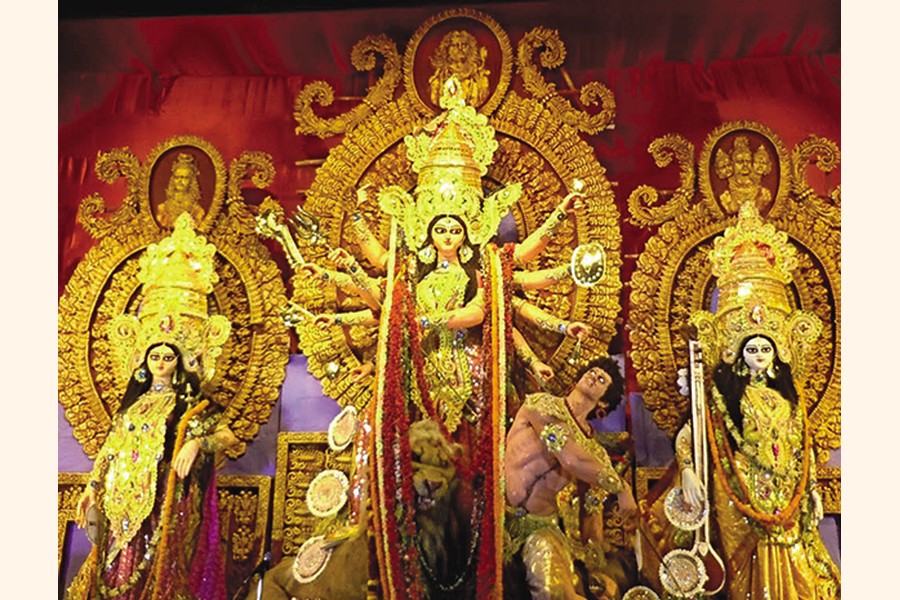Sarat or autumn, the third season on the Bangla calendar, is unlike the fall in the Western hemisphere. They call it fall perhaps because the trees mostly shed their leaves that turn profusely crimson. Before their demise, the leaves exhaust all the hues they command in their last gasp of colouring them like the setting sun giving out all its colours to paint the western sky in deep vermilion.
No such natural process of abscission takes place for deciduous plants, rather it happens in the summer in this part of the world. Autumn is mostly a time of clear blue sky with patches of white clouds floating idly and the second month of the season becoming cooler than the first month of sweltering heat. In fact, Aswin brings a few natural gifts unique to the seasons. Sheuli also called parijat (night-flowering jasmine) and cashphul (catkins) with their abundance whiteness provide the season with a sense of solemnity and purity. Although rains cannot be ruled out, it is a time when the air is fresh, sunshine is at its most glorious. If Nature could talk or whisper to human ears, it is none other than autumn.
No wonder, in communion with Nature the Bangalee followers of the Sanatan Dharma consider the season's extraordinary clarity and richness of splashing whiteness synonymous with their greatest festival the worship of goddess Durga. A perfect setting indeed! It is as much a celebration of the season as the religious rituals. The idol of Durga is made out of clay on a frame of straws and sliced bamboo. But Durga does not arrive alone, she has a retinue comprising her two daughters and sons. Her mount is a lion and her adversary is an asur or monster who confront each other under her feet. Similarly, her sons and daughters have birds and a tiny animal for their mounts.
Although goddess Durga is fighting the Mahishashur, a fierce monster, whom she kills ultimately, the battle is depicted in its last scene where she vanquishes the latter. Thus in no way is the scene cruel or repulsive, rather it presents an endearing family environment where she is doing the monster a favour by bringing an end to his demonic life. The message here is the triumph of goodness or righteousness over the evil or wickedness.
In fact, Durga is a symbol of power ---power concentrated in a mother figure. She has been a creation out of the finest attributes of all the mighty gods. When gods and goddesses lost their heaven to the demons, a woman power had to be invoked in order to defeat their usurpers. It is, therefore, a tribute to woman power. The motherly goddess is powerful enough to kill demons no god can do and at the same time she is a protector of the weak and helpless. This is a lesson for respecting women in social life.
The images of Durga have changed over the years but the aestheticism and internal theme of the triumph of the good over the bad have not been compromised. Add to this, the family bond in which Durga turns into Uma who comes on a yearly visit to her paternal house from her husband's. In this way, the iconic power wielder goddess is a daughter pining for her parents' love and care. Myth, religious and day-to-day life's themes thus get interwoven to present a colourful and vibrant celebration.
Rituals are there but a sense of liberalism is there too to accept interpretations that are at times contrasting in nature. This gives Durga Puja its flexibility and the followers can offer open arms to greet every one irrespective of caste, creed and belief. In range and scope this celebration has become universal indeed. Let people across the religious divide join in the celebration.

- Monday, 23 December 2024 |
- Today's FE |
- e-Paper |
- Beta Website

